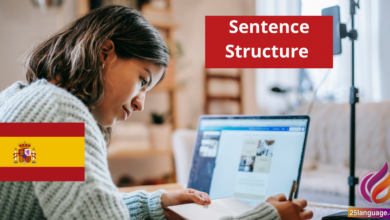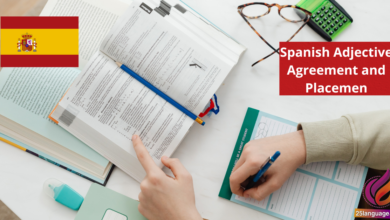Spanish Conjunctions and Connecting Words and Ideas

Imagine having a powerful toolkit that enhances yoru ability to communicate in Spanish, allowing you to connect thoughts, ideas, and emotions seamlessly. Spanish conjunctions are the key to unlocking this potential, serving as bridges that link words and phrases together in more meaningful ways.In this lesson, you’ll discover how these essential words not only enhance your fluency but also elevate your storytelling and conversations, making your Spanish sound more natural and engaging. Let’s dive in!
Exploring Spanish Conjunctions for Fluent Connections
In spanish, conjunctions are essential for connecting words, phrases, and clauses, enabling clear and fluid communication. The most common conjunctions can be categorized into coordinating and subordinating. Coordinating conjunctions include words like y (and), o (or), and pero (but). As a notable example:
- Me gusta el chocolate y las fresas. (I like chocolate and strawberries.)
- ¿Prefieres té o café? (Do you prefer tea or coffee?)
- No me gusta el verano, pero amo el invierno. (I don’t like summer, but I love winter.)
Subordinating conjunctions,conversely,introduce dependent clauses. Some key subordinating conjunctions include porque (because), aunque (although), and cuando (when). Such as:
- Voy a la tienda porque necesito comprar pan. (I’m going to the store because I need to buy bread.)
- Te llamaré aunque esté ocupada. (I will call you although I am busy.)
- Cuando llegues, empezaremos la reunión. (When you arrive, we will start the meeting.)
| Spanish Example | Rule | English Translation |
|---|---|---|
| Me gusta el chocolate y las fresas. | Coordinating conjunction | I like chocolate and strawberries. |
| ¿Prefieres té o café? | Coordinating conjunction | Do you prefer tea or coffee? |
| No me gusta el verano,pero amo el invierno. | Coordinating conjunction | I don’t like summer, but I love winter. |
| Voy a la tienda porque necesito comprar pan. | Subordinating conjunction | I’m going to the store as I need to buy bread. |
| Te llamaré aunque esté ocupada. | subordinating conjunction | I will call you although I am busy. |
| Cuando llegues, empezaremos la reunión. | Subordinating conjunction | When you arrive, we will start the meeting. |
Mastering the Art of Linking Ideas in Spanish
Linking ideas in Spanish often involves using conjunctions, transitional phrases, and specific vocabulary to create coherence in communication. Key conjunctions include y (and), o (or), pero (but), and porque (because). For instance:
- Me gusta el chocolate, y me encanta el helado.
(I like chocolate, and I love ice cream.) - No tengo tiempo, pero puedo ayudarte mañana.
(I don’t have time,but I can help you tomorrow.) - Fui al mercado porque necesitaba comprar frutas.
(I went to the market because I needed to buy fruits.)
Additionally, using transitional phrases can enhance the flow of ideas. Phrases such as sin embargo (however), por lo tanto (therefore), and en cambio (on the other hand) are commonly used. Here’s how thay can be applied:
| Spanish Example | Rule | English Translation |
|---|---|---|
| Me gusta el cine; sin embargo, prefiero ver series en casa. | Use “sin embargo” to contrast ideas. | I like the cinema; however, I prefer to watch series at home. |
| no tenía dinero; por lo tanto, no compré nada. | Use “por lo tanto” to indicate cause and effect. | I had no money; therefore, I didn’t buy anything. |
| Quiero ir al parque; en cambio, podríamos quedarnos en casa. | use “en cambio” to suggest an alternative. | I want to go to the park; on the other hand, we could stay at home. |
Unlocking the Power of Conjunctions in Spanish Communication
Conjunctions are essential tools in Spanish that allow us to link words, phrases, and clauses together, creating more complex and meaningful sentences. The most common conjunctions include y (and), o (or), and pero (but). Each serves a unique purpose in communication, connecting ideas effectively. For example, you might say: Me gusta el chocolate y la vainilla, meaning “I like chocolate and vanilla.” Here, y connects two nouns. Another example is: ¿Quieres pizza o hamburguesas?, which translates to “Do you want pizza or hamburgers?” In this case, o presents a choice between two options.
Moreover, some conjunctions function to provide contrast or conditions. The conjunction pero is used to express a contrast between two clauses. For instance, Quiero ir al cine, pero estoy cansado means “I want to go to the cinema, but I am tired.” Additionally, conjunctions like porque (because) and aunque (although) help convey reasons and conditions. An example would be: No fui a la fiesta porque estaba enfermo, which translates to “I didn’t go to the party because I was sick.” Understanding these conjunctions is crucial for constructing coherent sentences and enriching your Spanish communication skills.
| Spanish Example | Conjunction | English Translation |
|---|---|---|
| Me gusta el chocolate y la vainilla | y | I like chocolate and vanilla |
| ¿Quieres pizza o hamburguesas? | o | Do you want pizza or hamburgers? |
| Quiero ir al cine, pero estoy cansado | pero | I want to go to the cinema, but I am tired |
| No fui a la fiesta porque estaba enfermo | porque | I didn’t go to the party as I was sick |
| Aunque esté lloviendo, iré a caminar | aunque | Even though it is indeed raining, I will go for a walk |
Practical Strategies for Using Conjunctions in Everyday Conversations
in Spanish, conjunctions are essential for connecting phrases and clauses, enabling fluent conversation. The most common conjunctions include y (and), o (or), pero (but), and porque (because). Here are some strategies to effectively use them in your dialogues:
- Combining Simple Sentences: Use y to link two ideas. Such as,Voy al mercado y compro frutas (I am going to the market and buying fruits).
- Presenting Alternatives: Use o in questions or when offering choices, such as ¿Quieres té o café? (Do you want tea or coffee?).
- Contrasting Ideas: To introduce a contrasting idea, use pero. For instance, Me gusta el helado pero no puedo comerlo (I like ice cream but I can’t eat it).
- Explaining Reasons: Porque is used to clarify reasons, as in No fui a la fiesta porque estaba cansado (I didn’t go to the party because I was tired).
| Spanish example | Rule | English Translation |
|---|---|---|
| Quiero pizza y ensalada. | Combining ideas | I want pizza and salad. |
| ¿Vas a la playa o a la montaña? | Presenting alternatives | Are you going to the beach or the mountains? |
| Tengo hambre, pero no hay comida. | Contrasting ideas | I’m hungry, but there is no food. |
| Estudio español porque me gusta viajar. | Explaining reasons | I study Spanish because I like to travel. |
In retrospect
¡Felicitaciones! Has llegado al final de nuestra lección sobre “Conjunciones en español: Conectando palabras e ideas”. Hoy hemos explorado la importancia de las conjunciones y cómo estas herramientas gramaticales permiten que tus oraciones sean más fluidas y conectadas. Aprendiste a diferenciar entre las conjunciones coordinantes y subordinantes, y cómo su uso enuncia relaciones entre ideas, aportando claridad y coherencia a tus expresiones.
Recuerda que practicar es clave. Te animo a que, al comunicarte en español, experimentes incorporando diferentes conjunciones en tus conversaciones y escritos. ya sea en tus diálogos cotidianos o en la redacción de un simple correo, las conjunciones enriquecerán tu dominio del idioma y te ayudarán a conectar tus pensamientos de manera efectiva.
No dudes en revisitar estos conceptos y crear ejercicios que te permitan afianzarlos. ¡Cada palabra que aprendes es un paso más hacia la fluidez! Sigue avanzando con confianza, y recuerda que cada práctica te acerca a tu meta de hablar español con soltura. ¡Buena suerte y sigue así!





























